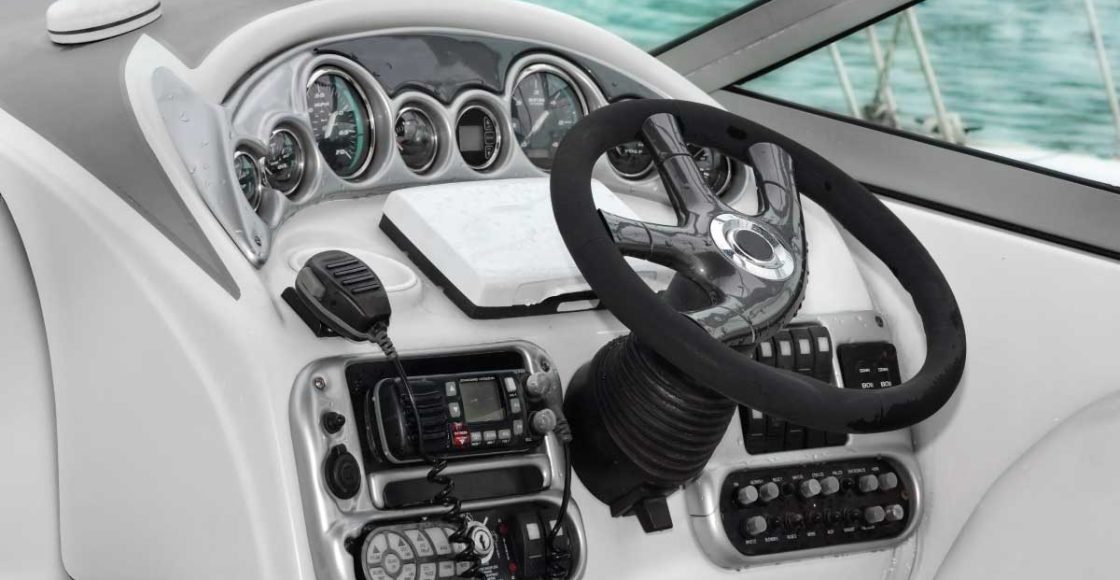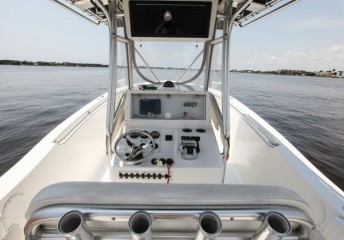Marine Electronics: Understanding the Basics
Last Updated on December 1, 2023 by Boatsetter Team
Marine electronics are devices for navigation and communication aboard a boat or ship. With the rapid expansion of technology, marine electronics have evolved to include cartography, collision avoidance, onboard connectivity, tracking wind, and propulsion integration.
What electronics do I need on my boat?
The boat devices you need depend on boat type, how, and where you boat. A tow boat used for watersports on a lake doesn’t need much other than a speedometer. In contrast, a sailboat used for passage making needs a full suite, including a chartplotter, radar, depth sounder, and more.
How much are boat electronics?
The cost of electronics will differ by what you need and how you use them. A basic chartplotter (9-inch screen) can cost under $500, VHF radios start around $100, and a large (16-inch or more) fully integrated MFD with transducers and antennas typically can go well over $10,000 and requires periodic software updates.
Let’s dive a little deeper and look at 10 essential boat electronic devices:
- Multifunction Displays (MFDs)
- Chartplotter
- Radar & ASI
- Autopilot
- Wind instruments
- Depth sounder
- Fishfinder (sonar)
- Engine monitors
- Digital switching
- VHFs and SSB radios
1. Multifunction Displays (MFDs)
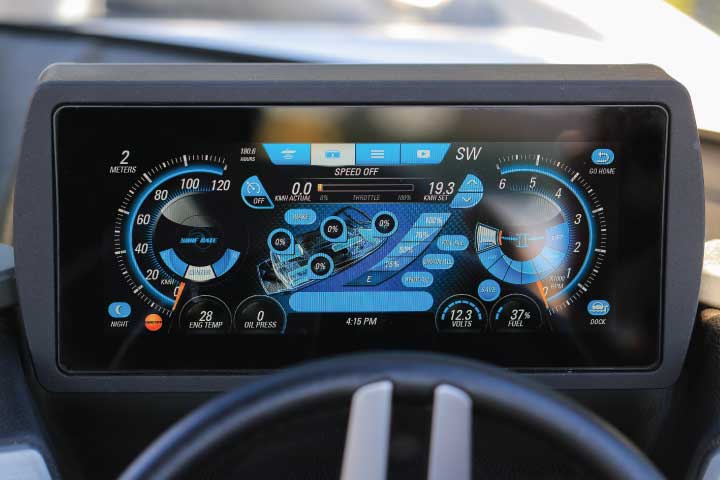
Multifunction Displays, also known as MFDs, are LCDs (buttons or touchscreen) that connect the user with various functions on a boat.
Although they were thought of as a display for cartography (chartplotters) first, MFDs have become the central command of marine electronics.
You can integrate all systems, including navigation and communication. It also supports audio and video capabilities that help you check your position, select tunes, or even watch a movie on an MFD.
All the components discussed below can be displayed on an integrated MFD.
2. Chartplotters
A chartplotter is used for navigation on the water and is like the navigation system in your car.
It combines GPS with marine cartography and is an electronic chart (map) to determine where you are and the best route for where you want to go.
3. Radar & ASI

Radar (radio detection and ranging) uses radio waves to determine your surroundings. It is beneficial at times of limited visibility, such as nighttime or fog.
Radar shows the distance, angle, and velocity of objects (boats or land-based sites) relative to your position. Radar can be sensitive enough to show rain squalls and includes an antenna (closed or open array) and a display like an MFD.
AIS (automatic identification system) is a short-range tracking system with radar to track targets (other vessels). Its primary purpose is collision avoidance as it follows the speed, bearing, and even names of boats around you.
4. Autopilot
Autopilot is the self-steering mechanism that can hold a pre-set course. Some autopilots will steer to a compass course or to the wind direction.
This device will steer to a waypoint, but they’re not set-it-and-forget-it gadgets. They don’t pick up what’s between your boat and the waypoint like other boats! So remain vigilant even when you use autopilot.
5. Wind Instruments
Wind instruments are small MFDs that provide specific information on wind velocity and angle. This is critical information for sailors, but any boater can benefit from knowing how the wind acts as a force on their boat. This feature comes in especially handy when docking or anchoring!
5. Depth Sounder
A depth sounder tells you the depth of the water. A transducer is mounted on or through the hull and sends radio signals. The rate at which the signal returns determines the depth of the water column.
You can incorporate offsets to give yourself a margin of safety. Just be sure you know whether the measurement is from the water’s surface or the bottom of the keel, or you could find yourself short. This information is displayed on your MFD’s screen.
6. Fish Finder (Sonar)
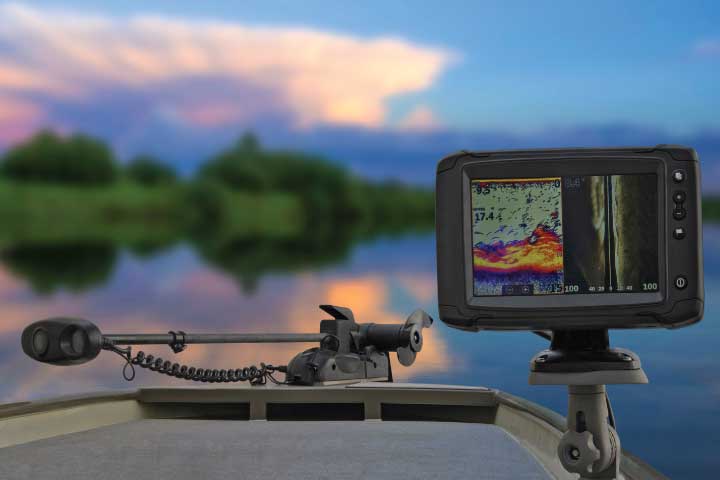
A fish finder locates fish or paints a picture of underwater structures. Like a depth sounder, a fish finder uses sound waves via a transducer.
The information can be displayed on a separate screen. But more often, it’s on your MFD’s screen.
Advanced fish finders paint a picture of more than fish, including rocks, reefs, or underwater objects.
7. Engine Monitors
Boats with one or more motors can display engine information on dedicated displays or MFDs.
These monitors are digital engine gauges providing information on temperature, tachometer, alarms, fluid levels, trim levels, rudder angles, diagnostics, service intervals, and more.
8. Digital Switching
Digital switching replaces mechanical switching. The breakers with a networked softkey approach to controlling onboard systems.
Now in days, even basic boats have components of digital switching technology.
9. VHF Radio
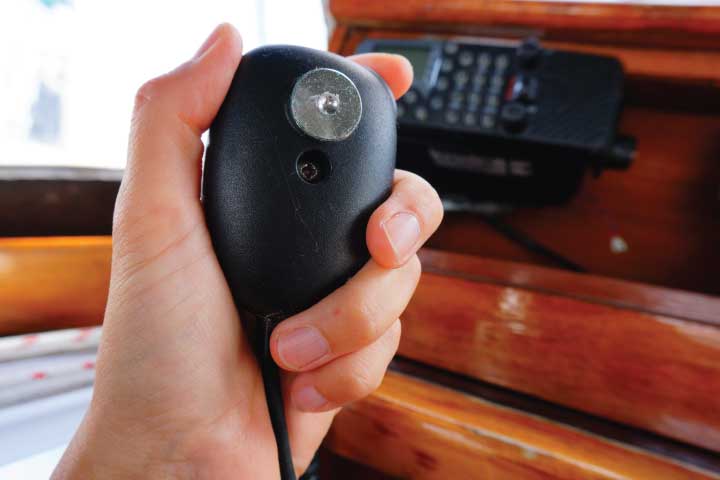
Very High Frequency, or VHF, radios operate at line-of-sight, which means they can be heard approximately 2-3 miles away. This may vary on your antenna height or if there’s anything (like an island) in the way.
VHF radios can be fixed mount (attached ship’s station) or handheld (portable). VHF radios may communicate with other boats, marinas, bridges, and the US Coast Guard.
Once a handheld radio is taken to shore, it cannot be used for personal transmissions. Anyone with a VHF can hear anyone who is transmitting. You should be careful about the information you share.
10. SSB Radio
A Single Sideband, or SSB, the radio operates as a point-to-point, two-way communication for long distances. It is HF (high frequency), uses radio wave propagation, and is used by offshore vessels.
The key to shopping for marine electronics is understanding what your boat can accommodate and what you need. We hope our list of 10 marine electronics to know is helpful to you.
Don’t let your boat sit idly by. List it with us to earn $20K on avg.

Zuzana Prochazka is an award-winning freelance journalist and photographer with regular contributions to more than a dozen sailing and powerboating magazines and online publications including Southern Boating, SEA, Latitudes & Attitudes and SAIL. She is SAIL magazines Charter Editor and the Executive Director of Boating Writers International. Zuzana serves as judge for SAIL’s Best Boats awards and for Europe’s Best of Boats in Berlin.
A USCG 100 Ton Master, Zuzana founded and manages a flotilla charter organization called Zescapes that takes guests adventure sailing at destinations worldwide.
Zuzana has lived in Europe, Africa and the United States and has traveled extensively in South America, the islands of the South Pacific and Mexico.
